We explore three influential early horror films that changed the face of the genre and gave rise to our favorite subgenres.
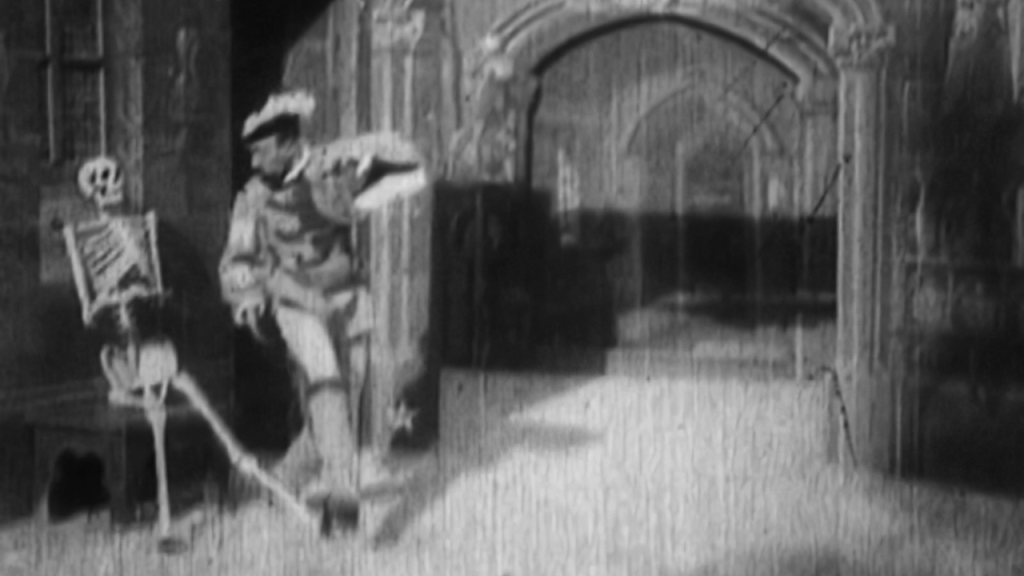
Many current genre films (and genre-adjacent films) explore dark themes without the intent to terrify audiences. These films emphasize tension and atmosphere rather than shocks and scares.
However, now there is a huge industry around films with the singular purpose of simulating fear. They are designed to cause distress and trigger the feeling of perceived danger. This has also given rise to the significant discourse around the science and potential negative or positive effects of subjecting ourselves to this kind of adrenaline-inducing stimulation.
You can argue the merits, but you can’t argue the fact that many of us crave being scared. We crave it in our movies, books, and even video and mobile games.
And it’s not just traditional horror media. Anything that elevates our heart rate and creates a sense of risk can induce fear. For instance, gambling in a PlayAmo casino can induce fear. It’s the same reason we love roller coasters, haunted houses, driving fast, skydiving, or any other activity that includes a sense of danger — real or perceived.
Because of our desire to be titillated and even terrified, Horror movies have existed almost as long as the art of cinema itself has been in existence.
Fans of Jordan Peel’s Nope may recall that the origin of moving pictures is often attributed to a short clip called The Horse in Motion (1878). This groundbreaking motion photography was accomplished using multiple cameras and assembling the individual pictures into a single motion picture.
The world’s earliest surviving motion-picture film, showing actual consecutive action, is called Roundhay Garden Scene (1888). It’s a short film directed by French inventor Louis Le Prince. While it’s just 2.11 seconds long, it is technically a movie. According to the Guinness Book of Records, it is the oldest surviving film in existence.
The earliest known supernatural-based genre film from Georges Méliès is the three-minute short film Le Manoir du Diable (1896), known in English as both The Haunted Castle or The House of the Devil. In fact, the current indie horror “it” director Ti West (X, Pearl), borrowed the latter title, The House of the Devil, for his slow-burn chiller about a college girl who ignores the advice of her best friend by taking a questionable housesitting gig on the night of a lunar eclipse deep in the woods at the Victorian home.
In the film, a bat transforms into Mephistopheles, an agent of the Devil. With the help of his assistant, he conjures demonic entities from a cauldron. In the end, one of the men uses a crucifix to make Mephistopheles disappear.
Ambitious in length at the time, this brief film was not actually meant to scare audiences but rather amuse them. However, because of its dark themes and characters, the film is widely heralded as the first horror film, with many crediting it as the first vampire film due to the human-bat transformation plot.
It wasn’t until the Golden Age of Horror — the two decades between the 1920s and 1930s — that filmmakers created stories designed to truly unsettle and frighten their audiences.
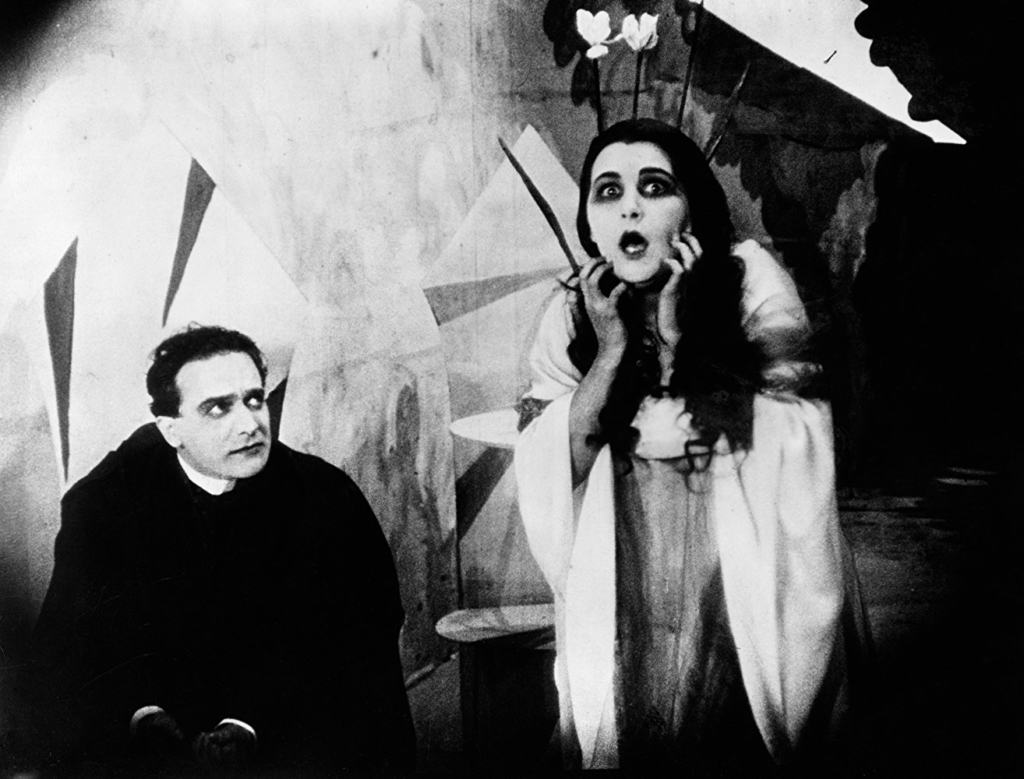
This is when we get monumental silent film titles such as The Cabinet of Dr. Caligari (1920) and Nosferatu (1922).
Once the silent era gave way to the technological process, we got the rise of the classic monster movie and a flood of films whose seismic influence on the genre is still felt today. This includes Frankenstein (1931), The Mummy (1932), and the first color adaptation of Dr. Jekyll and Mr. Hyde (1931).
The 30s is also the first time the word “horror” was used to describe the genre.
If you want to dig into the roots of horror in film, you can watch Méliès’ short in its entirety on YouTube right here.
While we’re unearthing horror history, here are three more groundbreaking films responsible for giving rise to our favorite horror sub-genres.
FOUND FOOTAGE: CANNIBAL HOLOCAUST (1980)
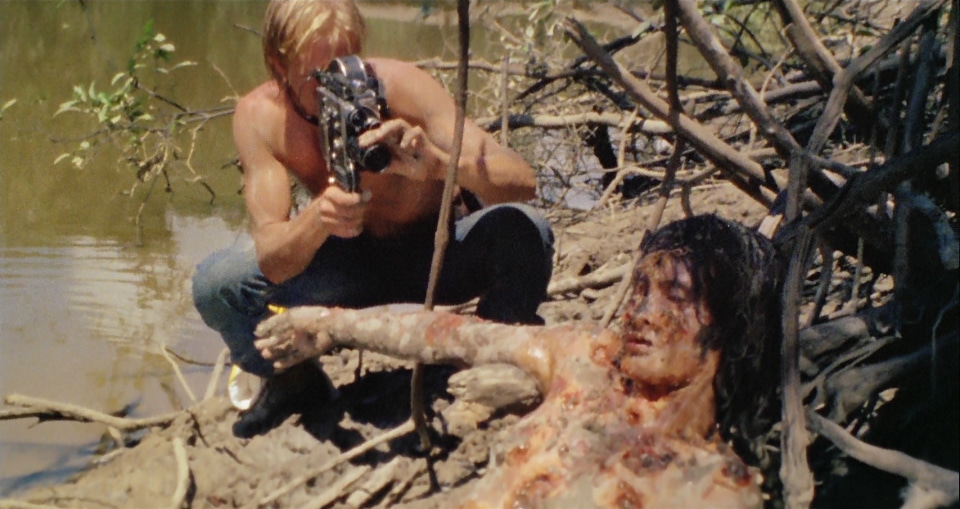
As a plot device found footage finds its earliest origins in literature, particularly in what is known as the epistolary novel. This work of fiction consists of either correspondence (letters) or diary entries, purportedly written by a character central to the events. Both Dracula and Frankenstein are examples of epistolary novels, which are just as influential in cinematic history as in literary history.
Found footage was popularised by The Blair Witch Project (1999) and has since become a genre staple. It’s been utilized in many successful film franchises, including Paranormal Activity, REC, Cloverfield, and V/H/S (with a new film coming to Shudder on October 20th).
The 1980 controversial cult horror film Cannibal Holocaust is often credited as the first example of found footage. However, an experimental satirical drama film shot in the early 1970s by none other than Orson Welles, The Other Side of the Wind, actually predates Cannibal. But the film wasn’t actually released until 2018 after more than 40 years in development. It’s also not a horror film but was intended by Welles to be his Hollywood comeback.
The story utilizes a film-within-a-film narrative that follows the last day in the life of an aging Hollywood film director (John Huston) as he hosts a screening party for his unfinished latest project. It was shot in an unconventional — now hugely popular — mockumentary style featuring a rapid cutting approach with both color and black-and-white footage.
After Welles died in 1985, filming was finally completed, and several attempts were made to reconstruct the unfinished film. In 2014, the rights were acquired by Royal Road, who helped finally give the film its long overdue release. You can watch it now on Netflix.
Despite the Welles film, Italian director Ruggero Deodato revolutionized the found footage style of narrative filmmaking with Cannibal Holocaust, the first horror film using this technique.
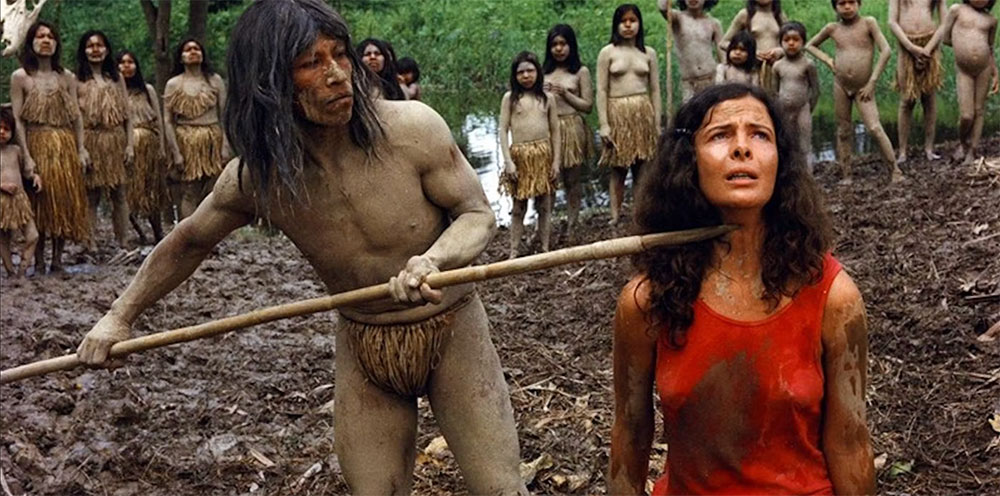
The film revolves around an anthropologist from NYU who leads a team into the Amazon rainforest to locate a crew of filmmakers. The crew had gone missing while filming a documentary on local cannibal tribes. When the rescue team can only recover the crew’s lost cans of film, an American television station wishes to broadcast the footage as a sensationalized television special. Upon viewing the reels, Monroe is appalled by the team’s actions and objects to the station’s intent to air the documentary.
Cannibal Holocaust was inspired by Italian media coverage of Red Brigades’ terrorism. The coverage included news reports that Deodato believed to be staged, an idea that became an integral aspect of the film’s story.
Additional story elements were influenced by the documentaries of Mondo director Gualtiero Jacopetti, including the presentation of the documentary crew’s lost footage, which constitutes approximately half of the film. The treatment of this very realistic footage innovated the found footage style of filmmaking.
The film is often discussed in terms of its controversial content and depiction of violence, which caused Deodato to be arrested on obscenity charges. Later, the filmmaker was even charged with multiple counts of murder due to rumors that actors were actually killed on camera.
He was cleared of these charges, but the film was banned in several countries. Even many avid horror fans shun the film due to its graphic sexual violence and genuine violence towards animals (you can now watch a cut of the film that has the real animal violence removed).
Controversy aside, the film’s influence on popular modern horror films cannot be denied. You can watch it now on Shudder. However, be warned that this version is uncut and does include scenes of animal violence. The Blu-ray release contains a “cruelty-free” film cut for those interested.
SLASHER: BLACK CHRISTMAS (1974)
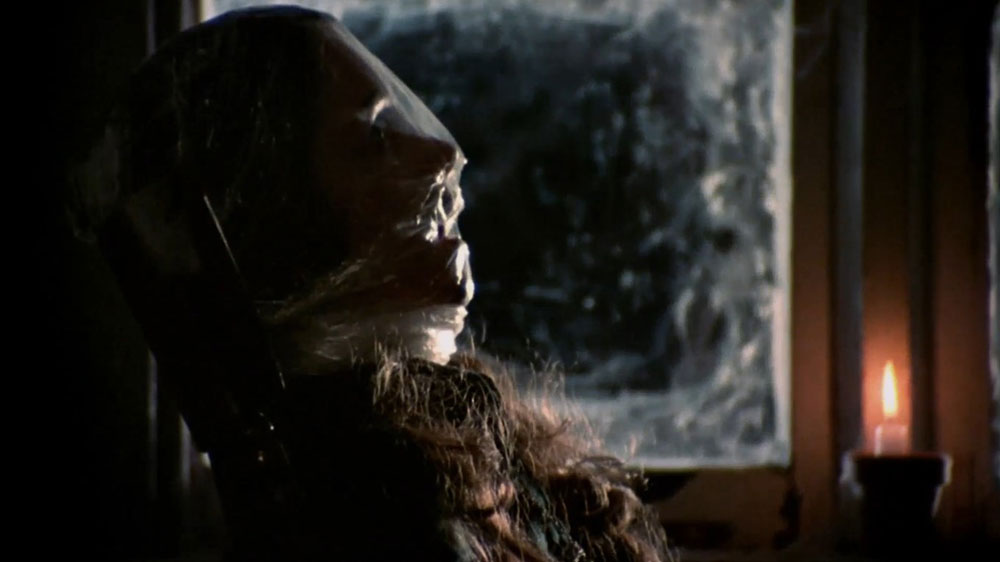
As with found footage films, slasher films find their earliest roots in literature. Agatha Christie’s famous mystery novel (and subsequently play) And Then There Were None (1939), set in an isolated location with a psychopathic killer grisly murdering the hapless victims, can be seen as an early precursor to the sub-genre. Christie’s play adaptation even expands the concept, with the revised stage ending featuring the female protagonist having a showdown with the killer in the classic “final girl” fashion.
In the film world, there is quite a bit of debate around which movie gets credit for birthing the slasher sub-genre.
Even before And Then There Were None, the little-known film Thirteen Women (1932) was perhaps the earliest example of what would become a slasher film. It documents eleven (not thirteen, as two women’s scenes were cut before theatrical release) women being harassed and murdered after a clairvoyant swami mails them a horoscope foreseeing swift doom. You can now rent this early horror film on Amazon or Apple/iTunes.
Alfred Hitchcock’s Psycho (1960) is sometimes described as the mother of all slasher films. Although there are only two murders in the film, the idea of a disguised and insane killer came to prominence in this film. And while it’s true that Psycho — a turning point in cinema history — did provide early inspiration for what would become the slasher sub-genre as we know it, it is more accurately categorized as a psychological horror/thriller.
Though not the first film of its kind, John Carpenter’s Halloween (1978) was the first to introduce the concept of the slasher as an indestructible evil force and is often considered the film responsible for the rise of the slasher trend, popularizing many of what would become key elements in the genre.
Released four years earlier, Bob Clark’s Black Christmas (1974) introduced many of the elements that were used in the higher-profile Halloween and many subsequent films.
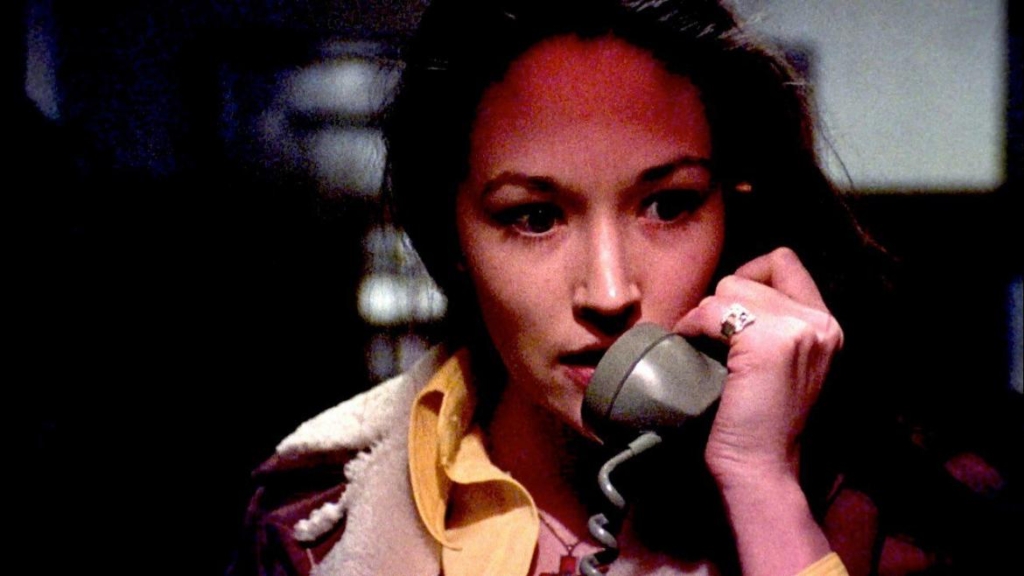
Because of that, many argue that it should hold the title of the first authentic slasher film, and few can argue that the film is critically important to the slasher subgenre.
Black Christmas featured point-of-view shots from the killer’s perspective and threatening phone calls made from inside the victim’s house, which would be reused by later filmmakers for decades to come. It also originated many of the genre’s most enduring tropes, including the trope of the babysitter not going upstairs and dealing with horror and murder during the holidays.
Inspired by the urban legend “the babysitter and the man upstairs” and a series of murders that took place in the Westmount neighborhood of Montreal, Quebec, A. Roy Moore wrote the screenplay under the title Stop Me. The filmmakers made numerous alterations to the script, primarily the shifting to a university setting with young adult characters.
Black Christmas received mixed reviews upon its release, but it has since received critical re-appraisal, with film historians noting its influence on Halloween (1978). Since its release, it has garnered a well-deserved cult following and spawned a successful franchise, including two remakes in 2006 and 2019.
The film is now regarded as one of the greatest horror films ever made and an important film in the pantheon of socially-conscious horror films due to how it tackles issues of feminism and the politically-charged topic of abortion.
The original Black Christmas can be streamed for free on Tubi, among many other platforms.
GORE (SPLATTER): BLOOD FEAST (1963)
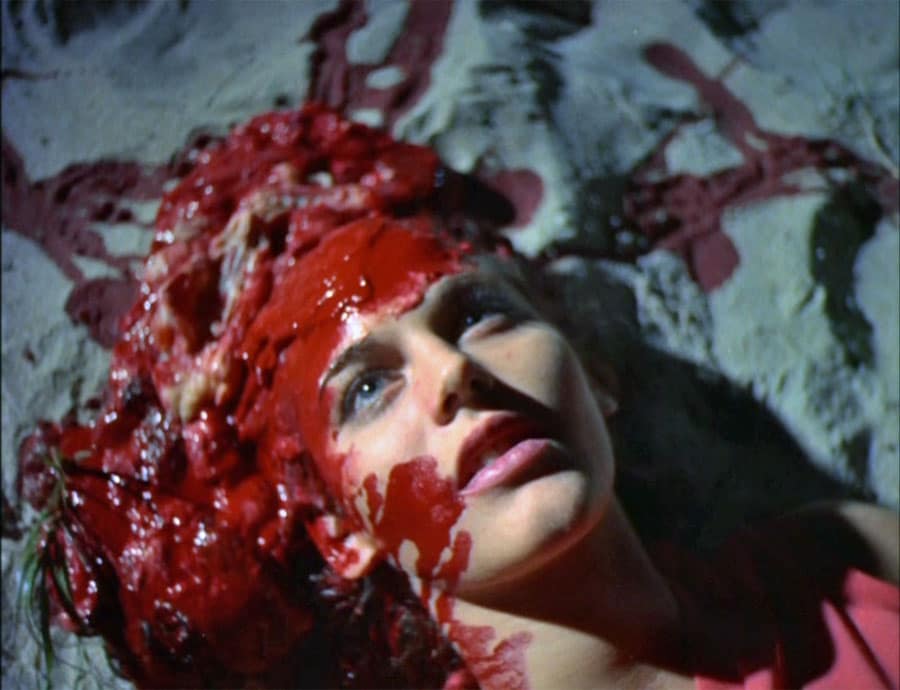
The splatter film has its aesthetic roots in French Grand Guignol theatre, which endeavored to stage realistic scenes of blood and carnage for its patrons. In 1908, Grand Guignol made its first appearance in England. But due to strict British censorship, the gore was downplayed in favor of a more Gothic tone.
The first appearance of gore — the realistic mutilation of the human body — in cinema can be traced to D. W. Griffith’s Intolerance (1916), which features numerous Guignol-esque touches, including two onscreen decapitations and a scene in which a spear is slowly driven through a soldier’s naked abdomen as blood wells from the wound. Several of Griffith’s subsequent films, and those of his contemporary Cecil B. DeMille, featured similarly realistic carnage.
Intolerance, subtitled Love’s Struggle Throughout the Ages, is available to stream now on Amazon Prime and many other platforms.
In the late 1950s and early 1960s, the public was reintroduced to splatter themes and motifs by groundbreaking films such as the aforementioned Psycho and the output of Hammer Film Productions.
Perhaps the most explicitly violent film of this era was Nobuo Nakagawa’s Jigoku (1960), which included numerous scenes of flaying and dismemberment in its depiction of the Buddhist underworld Naraka. Watch it now on The Criterion Channel.
However, it wasn’t until the early 1960s that Splatter emerged as a distinct sub-genre of horror, spearheaded by legendary filmmaker Herschell Gordon Lewis.
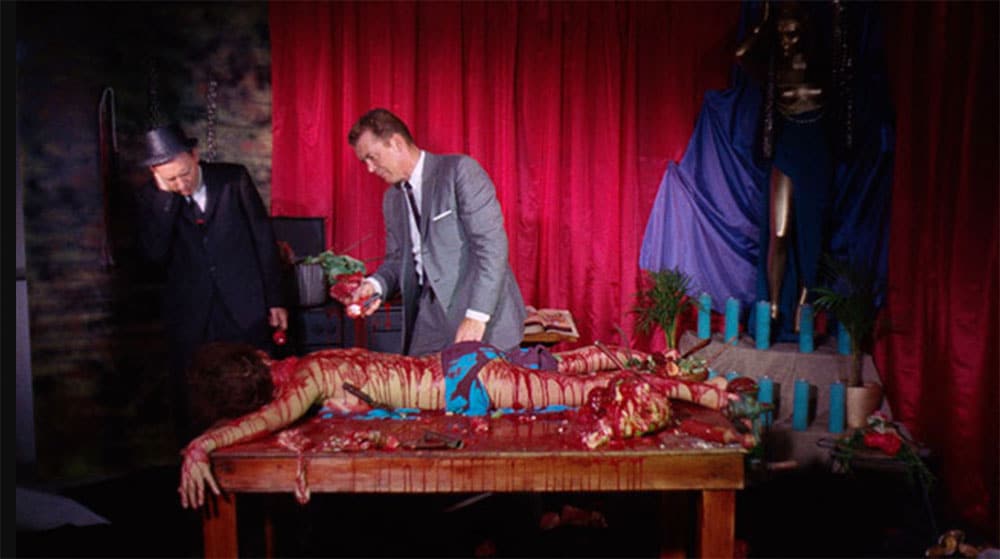
Eager to maintain a profitable niche, Lewis turned to something that mainstream cinema still rarely featured: scenes of visceral, explicit gore. In 1963, he directed Blood Feast, widely considered the first splatter film.
The plot of Blood Feast focuses on a psychopathic food caterer named Fuad Ramses (Arnold), who kills women to include their body parts in his meals and perform sacrifices to his “Egyptian goddess” Ishtar.
The concept arose in the early 1960s, three years after the release of Psycho. Lewis, previously a teacher at Mississippi State College, had quit his job to enter the film business and directed several “nudie cutie” films in the early 1960s. Lewis had seen Psycho and felt that the film had cheated by showing the results of the murders in the film but not the action because Hitchcock could not risk getting turned down by theaters.
The main idea behind Blood Feast was that bathtubs of blood would be spilled to portray an Egyptian meal cooked with the bodies of virgins and the tongue of a woman being ripped out of a woman’s mouth.
Producer Friedman came up with some publicity stunts to promote the film, such as giving theater-goers “vomit bags” and intentionally taking out an injunction against the film in Sarasota, Florida, to gain publicity. Both were very effective and helped make the film a hit with horror fans, prompting an increase in much more explicit genre content.
The rise in popularity of these splatter films in the 1970s (films like I Spit on Your Grave), considered extreme for the time, led to rampant film censorship and the rise of the “video nasties” movement in the U.K.
Nevertheless, the sub-genre has been a beacon for filmmakers and fans of subversive content. Peter Jackson started his career in New Zealand by directing the splatter movies Bad Taste (1987) and Braindead (1992). The found footage pioneer Cannibal Holocaust is also an influential example of splatter cinema.
Watch Blood Feast for free on Tubi (among other platforms).


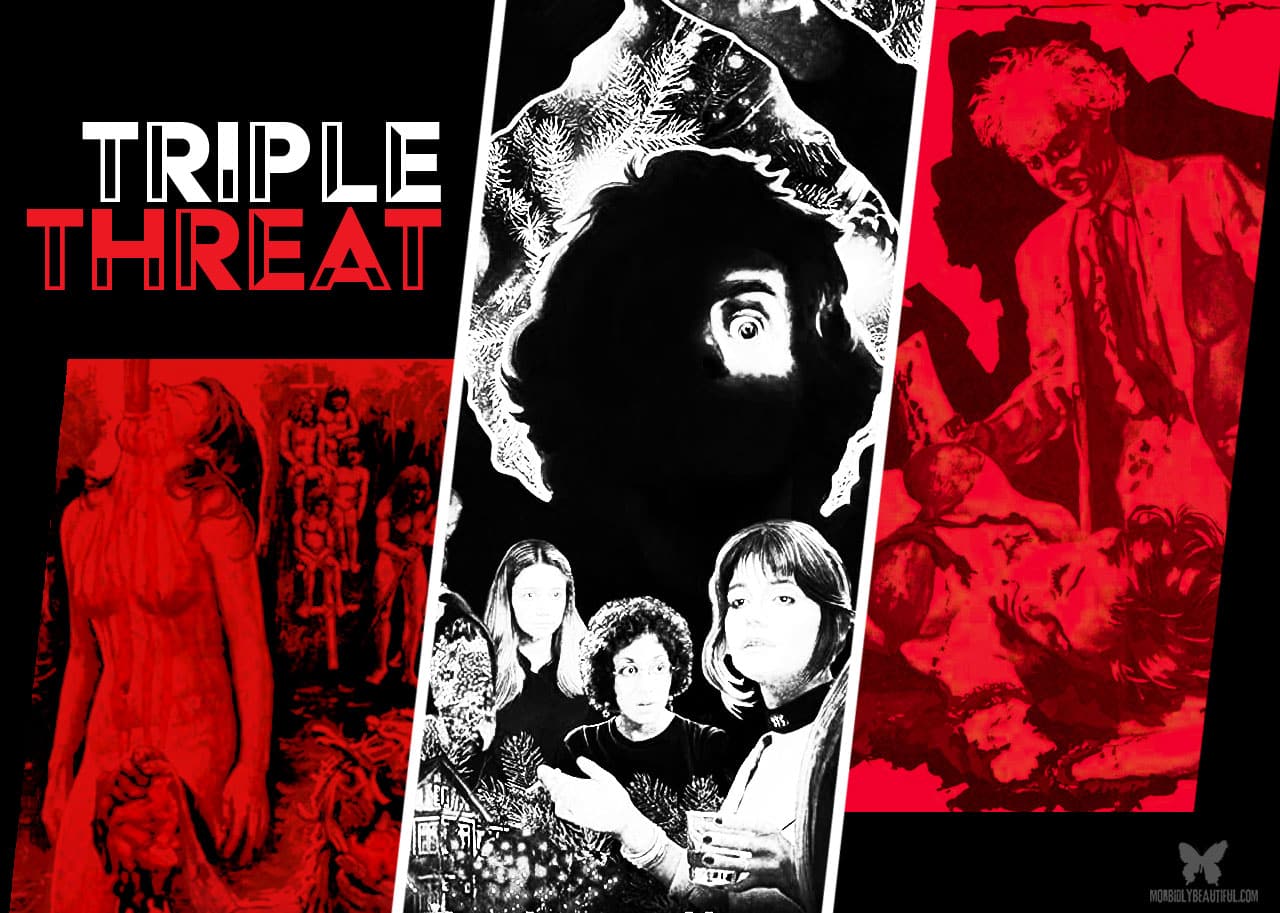
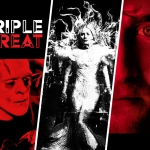





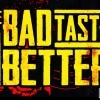




Follow Us!